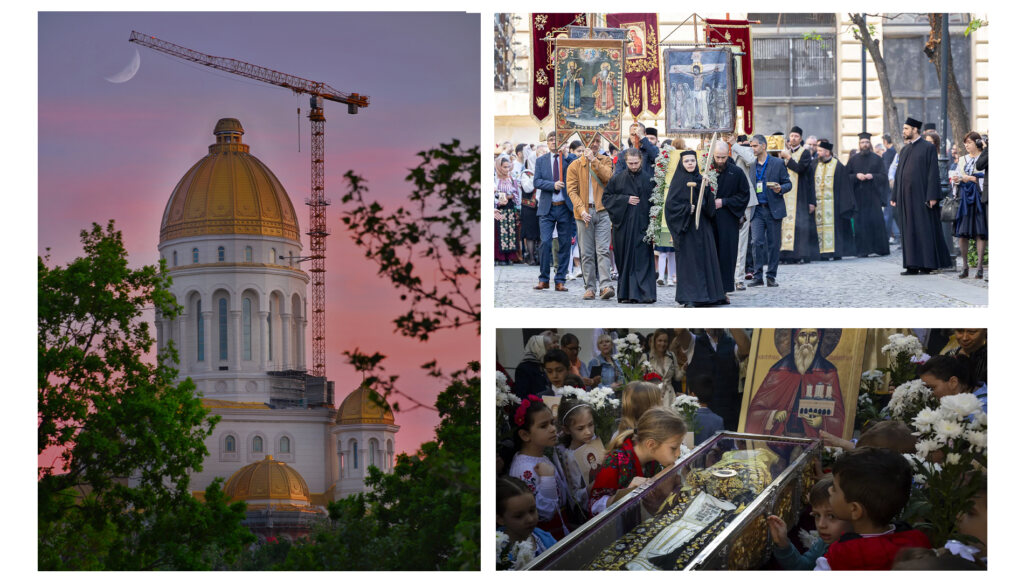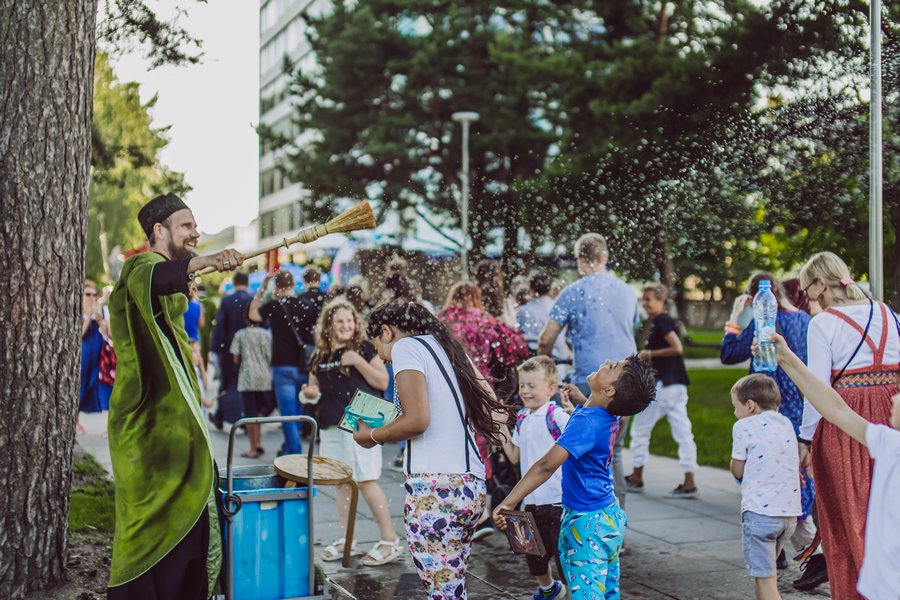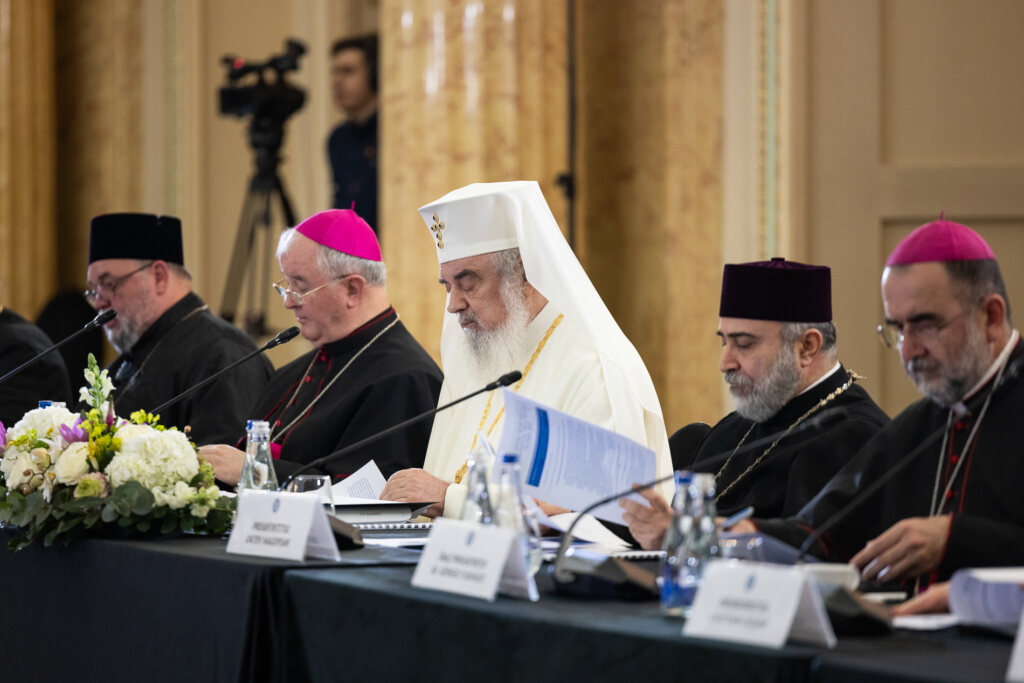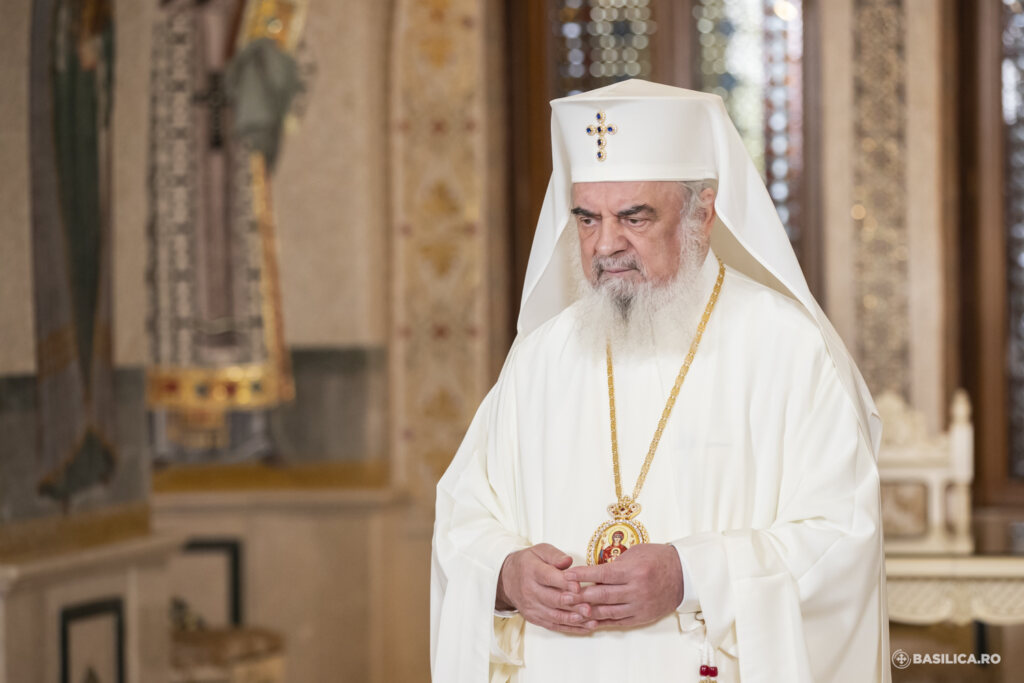Hieromartyr Basil, Bishop of Amasea
He lived at the beginning of the fourth century in the Pontine city of Amasea. He encouraged and comforted the Christians suffering persecution by the pagans.
During this time the Eastern part of the Roman Empire was ruled by Licinius (311-324), the brother-in-law of the holy emperor Constantine the Great (May 21). Licinius deceitfully signed Saint Constantine’s Edict of Milan (313), which granted religious toleration to Christians, but he hated them and continued to persecute them.
Holy Virgin Glaphyra
Emperor Licinius burned with passion for Glaphyra, a maidservant of his wife Constantia.
The holy virgin reported this to the empress and sought her help. Dressing her in men’s attire and providing her with money, empress Constantia sent her to Pontus in the company of a devoted servant. They told the emperor that Glaphyra had gone mad and lay near death. On her way to Armenia, Saint Glaphyra stopped in Amasea, where the local bishop, Saint Basil, gave her shelter.
At this time the saint was building a church in the city. Saint Glaphyra donated all the money that she had received from Constantia for its construction, and in a letter to the empress she asked her to send additional funds to complete the church. The empress fulfilled her request. However, Saint Glaphyra’s letter fell into the hands of the emperor.
The enraged Licinius ordered the governor of Amasea to send him the hierarch and the maidservant. Saint Glaphyra died before the edict arrived in Amasea, and Saint Basil was sent to the emperor. Two deacons, Parthenius and Theotimos, followed after him and lodged near the prison where the saint was held.
The pious Christian Elpidephoros bribed the jailer and each night he visited the saint with Parthenius and Theotimos. On the eve of the saint’s trial, he sang Psalms and chanted, “if I should sojourn at the extremity of the sea… even there Thy hand would guide me, and Thy right hand would hold me” (Ps 138/139:9-10). These were prophetic words.
Three times he broke down in tears. The deacons were afraid that the saint would not be able to endure the coming torments, but he calmed them.
At the trial, Saint Basil resolutely refused the emperor’s offer to become a pagan priest, and so he was sentenced to death. Elpidephoros gave the soldiers money, and they allowed the saint to pray and to speak with his friends before execution. Then the saint said to the executioner, “Friend, do as you have been ordered.” Calmly, he bent his neck beneath the sword.
When the martyr had been beheaded, Elpidephoros tried to ransom his relics from the soldiers. But the soldiers feared the emperor and threw the saint’s body and head into the sea. After this, an angel of God appeared to Elpidephoros three times in a dream, saying, “Bishop Basil is in Sinope and awaits you.”
Heeding this call, Elpidephoros and the deacons sailed to Sinope, and there they hired fishermen to lower their nets. When they lowered the net on the suggestion of the deacons Theotimos and Parthenius, they came up with nothing.
Then Elpidephoros declared that he would ask them to lower the net in the name of the God he worshipped. This time, the net brought up the body of Saint Basil. The saint’s head was attached to his body once more, and only the gash on his neck indicated the blow of the sword. The relics of Saint Basil were taken to Amasea and buried in the church he built.
Martyrs Cyrillus, Kindaeas and Dasius from Axiopolis (Dobrudja)
They suffered martyrdom in the time of Emperor Diocletian, in the fortress of Axiopolis near Cernavodă and Durostorum.
Of those who suffered here, Cyrillus, Kindaeas and Dasius, whose names are mentioned in an inscription discovered in 1947, are the best known.
Saint Cyrillus was honoured in Axiopolis with five feast days. He was either a local martyr, or had only suffered here for Christ, probably on 26 April. It is believed that a church was built on his tomb, the ruins of which can still be seen today.
The same is true of Kindaeas, a local saint, probably a Dacian-Roman.
As we learn from Fr Prof Dr Mircea Păcurariu’s book on Daco-Roman and Roman Saints on the territory of today’s Romania, many historians believe that Dasius is one and the same person as the martyred soldier Tasius, whose “martyrdom act” shows that he died in the fortress of Durostorum on November 20, 304. These historians believe that he suffered martyrdom at Axiopolis and his relics were placed for a while in Durostorum.
From his martyrdom act, we learn many interesting things about his suffering. He was a soldier in the Roman army at the time of Diocletian’s persecution. At that time, the celebration of ‘Saturnalia’ was widespread, in honour of the Greek god Chronos, called Saturn by the Romans, the god of time. On this occasion, it was customary to choose by casting lots a soldier as the ‘king of Saturnalia’, who was dressed ‘in a royal robe in the likeness of Chronos himself’ and allowed to indulge for 30 days in all manner of ‘ungodly and shameful’ deeds and ‘devilish pleasures’.
After the end of these days, however, on the day of the feast itself, his life also ended, for he was to be sacrificed to Chronos and killed with swords. It so happened that the Christian soldier Dasius was chosen to celebrate the feast of Chronos. “Fired with holy zeal”, as his martyrdom act testifies, he realised that after those days of vain and fleeting feasts, “he would be thrown into the eternal fire”, so Dasius said to himself: “It is better for me to suffer the few torments and labours for the name of our Lord Jesus Christ and after death to inherit eternal life with all the saints”.
Therefore, at the beginning of the feast, Dasius told the other soldiers that he was a Christian and that he preferred to be offered himself as a sacrifice to Christ. Immediately arrested, he was brought before his military commander Bassus for trial the next day. The fearless Dasius vigorously rebuffed all the latter’s attempts to make him honour the images of the then emperors.
He stated: “I am a Christian and I do not serve the earthly king, but the heavenly King, and I receive his gift, live by his grace, and am enriched by his unfailing love of mankind” or: “I confess that I am a Christian and I submit to none other than the one, pure and eternal God, Father, Son and Holy Spirit, who is in three names and faces, but of one being”. Seeing that all attempts to divert him from his way remained in vain, the legate Bassus subjected him to many torments and finally ordered his head to be cut off.
His death took place on November 20, 304. The relics of the blessed martyr of Christ were taken to Durostorum and, in 579, to Ancona, Italy, where they are preserved to this day in the church of St Cyriacus; there is a Greek inscription on his sarcophagus: Here lies the martyred St Dasius, brought from Dorostol (Durostorum).
Tr by oca.org






